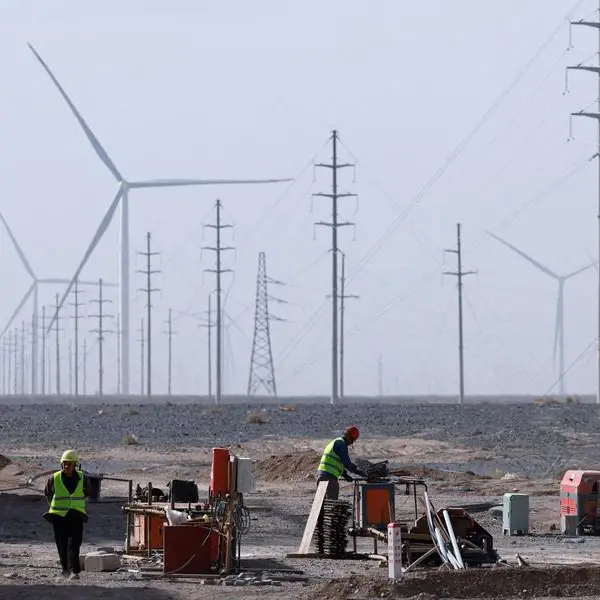PHOTO
A trader works on the floor at the New York Stock Exchange (NYSE) in New York City, U.S., April 21, 2025. REUTERS/Brendan McDermid.
(The opinions expressed here are those of the author, Stephanie Guild, CFA, the President of Robinhood Asset Management and Senior Director of Investment Strategy for Robinhood Financial. The views are her own.)
In markets, expectations are everything. And it is safe to say that right now S&P 500 earnings growth for 2025 has a very good chance of being lower than expected. The real question is which sectors are most at risk.
Earnings season is just getting into full swing, kicking off with the U.S. banks. So far, 2025 bottom-up earnings growth estimates for the S&P 500 have not changed much from the prior quarter, despite the market’s reaction to U.S. President Donald Trump’s tariff announcement on April 2 and the resulting spike in recession and inflation fears.
In fact, S&P earnings growth for 2025 is still expected to hit double digits at 11%, seemingly unfettered by recession concerns, even though the Atlanta Fed’s GDPNow model is predicting a 2.2% contraction for the first quarter, compared to 2.7% growth in the fourth quarter. Even when adjusting for the surge in gold imports, the Atlanta Fed forecast still anticipates a growth rate of minus 0.1% for the period.
In addition, the Yale Budget Lab estimates that the tariffs implemented as of April 15 will detract from U.S. GDP by 1.1% in 2025. Historically, for every 1% change in quarterly GDP, there is a 4% change in earnings growth, meaning S&P earnings growth could fall by about 4% this year.
Of course, the Trump administration has delayed most of the "reciprocal tariffs" and at least temporarily exempted many electronics from the wide-sweeping duties. But trade tensions between the U.S. and China have continued ratcheting up this week, so the trade war is still very much in play.
And that means the gap between U.S. earnings expectations and reality likely needs to close.
SECTOR BY SECTOR
When diving deeper, it is clear that the earnings picture differs considerably by sector.
Caution is already embedded in the numbers in several vulnerable areas, particularly the cyclical sectors – energy, real estate, materials, industrials and consumer – where earnings growth expectations have been reduced by 65% on average since December 31.
Some of the biggest negative revisions were in the food products industry, likely because many companies in this sector source packaging and inputs from Canada, one of the first countries to get hit with higher U.S. tariffs this year.
Expectations in the auto industry are also already deep in the red, as the White House has sought to reduce vehicle imports with stiff 25% tariffs. The President has hinted that he is considering some auto exemptions, but the uncertainty being generated may weigh on earnings regardless.
The more interesting story, of course, is where earnings expectations haven’t shifted. Within financials and technology are two notable examples.
Credit card companies have actually seen increases in their earnings growth expectations this year based on the assumption of stable delinquencies and deregulation. These rosy forecasts may soon need to be revised, with consumer sentiment falling and the possibility of higher inflation rising. The labor market will also be key to watch, with an unemployment rate of 4.5% or higher likely being a cause for concern.
In the tech sector, communications equipment and, to a lesser extent, electronic equipment have also seen a rise in earnings growth expectations. These industries include many long-standing tech firms, outside of the "Magnificent 7", that tend to have limited revenues from China and also typically create products used extensively in infrastructure, which the Trump administration is likely to continue funding.
THE BIGGER THEY ARE
It is also useful to consider the limited shifts in earnings expectations among the top-10 largest stocks in the S&P 500 by market cap, which represent a combined 35% of the index.
On average, this group of firms is expected to grow earnings by 14%, contributing more than 20%, or 6 percentage points, to the index’s total expected earnings growth in 2025.
Of these, Nvidia has dominated expectations, making up one-half of the top 10’s contribution. This means the AI chip maker represents about a quarter of 2025 earnings expectations for the S&P 500.
But that might change now that Nvidia has announced that it had to take a $5.5 billion hit for licensing charges to sell chips in China during the quarter ended April 27. Nvidia’s earnings growth was in question even before the "Liberation Day" announcement, thanks to the development of cheaper open-source AI models such as China's DeepSeek.
What ultimately might be most important to focus on during this earnings season isn’t so much the results – given how much has changed since the quarter ended – but the commentary during the company calls. How much potential impact from tariffs is already baked in? What is the general sentiment regarding the near-term outlook? And how is management handling their official guidance?
Again, in markets, it’s all about the expectations.
(The opinions expressed here are those of the author, Stephanie Guild, CFA, the President of Robinhood Asset Management and Senior Director of Investment Strategy for Robinhood Financial. The views are her own.)
(Writing by Stephanie Guild, editing by Anna Szymanski and Christian Schmollinger)





















